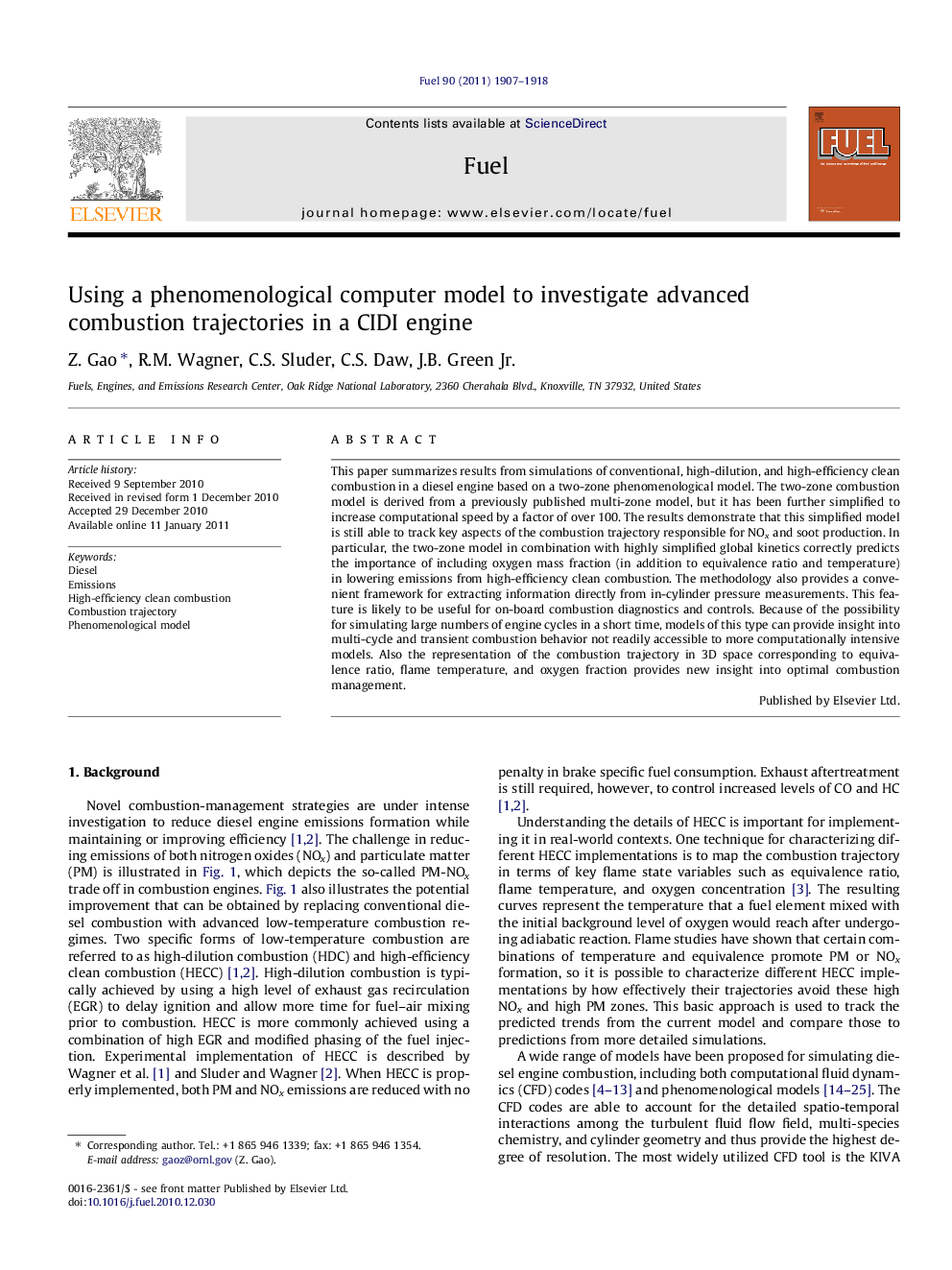| Article ID | Journal | Published Year | Pages | File Type |
|---|---|---|---|---|
| 206764 | Fuel | 2011 | 12 Pages |
This paper summarizes results from simulations of conventional, high-dilution, and high-efficiency clean combustion in a diesel engine based on a two-zone phenomenological model. The two-zone combustion model is derived from a previously published multi-zone model, but it has been further simplified to increase computational speed by a factor of over 100. The results demonstrate that this simplified model is still able to track key aspects of the combustion trajectory responsible for NOx and soot production. In particular, the two-zone model in combination with highly simplified global kinetics correctly predicts the importance of including oxygen mass fraction (in addition to equivalence ratio and temperature) in lowering emissions from high-efficiency clean combustion. The methodology also provides a convenient framework for extracting information directly from in-cylinder pressure measurements. This feature is likely to be useful for on-board combustion diagnostics and controls. Because of the possibility for simulating large numbers of engine cycles in a short time, models of this type can provide insight into multi-cycle and transient combustion behavior not readily accessible to more computationally intensive models. Also the representation of the combustion trajectory in 3D space corresponding to equivalence ratio, flame temperature, and oxygen fraction provides new insight into optimal combustion management.
